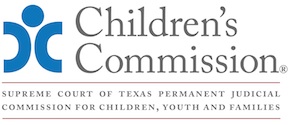
Texas Child Protection Law Bench Book
Updated September 2025
E. Children Who are Missing or Who are Victims of Sex Trafficking
If a child in DFPS managing conservatorship is missing from the child's substitute care provider, including a child who is abducted or is a runaway, according to CPS Policy Handbook § 6460 DFPS shall notify the following persons that the child is missing:
• The appropriate law enforcement agencies;
• The court with jurisdiction over the department's managing conservatorship of the child;
• The child's attorney ad litem;
• The child's guardian ad litem; and
• The child's parent unless the parent:
◦ cannot be located or contacted;
◦ has had the parent's parental rights terminated; or
◦ has executed an affidavit of relinquishment of parental rights. Tex. Fam. Code § 264.123(a).
DFPS must provide the notice required by Tex. Fam. Code § 264.123(a) not later than 24 hours after the time DFPS learns that the child is missing or as soon as possible if a person entitled to notice under Tex. Fam. Code § 264.123(a) cannot be notified within 24 hours. Tex. Fam. Code § 264.123(b). For additional information regarding DFPS policy about reporting requirements for caseworkers when a child or youth runs away or is missing, including notifying special investigators, see CPS Policy Handbook § 6461.1.
If a child has been reported as a missing child under Tex. Fam. Code § 264.123(a), DFPS must notify the persons described by Tex. Fam. Code § 264.123(a) when the child returns to the child's substitute care provider not later than 24 hours after the time the department learns that the child has returned or as soon as possible if a person entitled to notice cannot be notified within 24 hours. Tex. Fam. Code § 264.123(c).
DFPS must make continuing efforts to determine the location of a missing child until the child returns to substitute care, including:
• Contacting the appropriate law enforcement agencies, the child's relatives, the child's former caregivers; and any state or local social service agency that may be providing services to the child on a monthly basis; and
• Conducting a supervisory-level review of the case on a quarterly basis if the child is 15 years of age or younger to determine whether sufficient efforts have been made to locate the child and whether other action is needed. Tex. Fam. Code § 264.123(d).
DFPS must document in the missing child's case record:
• The actions taken by the department to determine the location of the child; and persuade the child to return to substitute care;
• Any discussion during, and determination resulting from, the supervisory-level review under Tex. Fam. Code § 264.123(d)(2);
• Any discussion with law enforcement officials following the return of the child regarding the child's absence; and
• Any discussion with the child described by Tex. Fam. Code § 264.123(f). Tex. Fam. Code § 264.123(e).
After a missing child returns to the child's substitute care provider, DFPS must interview the child to determine the reasons why the child was missing, where the child stayed during the time the child was missing, and whether, while missing, the child was a victim of conduct that constitutes an offense under Tex. Penal Code § 20A.02(a)(7). DFPS must report to an appropriate law enforcement agency any disclosure made by a child that indicates that the child was the victim of a crime during the time the child was missing. DFPS shall make a report not later than 24 hours after the time the disclosure is made. DFPS is not required to interview a missing child if, at the time the child returns, DFPS knows that the child was abducted, and another agency is investigating the abduction. Tex. Fam. Code § 264.123(f).
Additionally, if a child in DFPS conservatorship is identified as a Confirmed or Suspected-Unconfirmed victim of trafficking, whether familial or non-familial, the caseworker must assess the child's current service array and refer the child to appropriate services, as needed. Confirmed and Suspected-Unconfirmed victims of trafficking must be referred to the local Care Coordination Team (CCT), where a local CCT is in operation. The caseworker must document the assessment and referrals in a case narrative. CCT referral is also documented in the Trafficking Service Referral Survey. All needs and services identified for the child or youth must be addressed in the child's plan of service. Information regarding DFPS policy and procedure regarding confirmed or suspected victims of human trafficking can be found in CPS Policy Handbook § 6462.